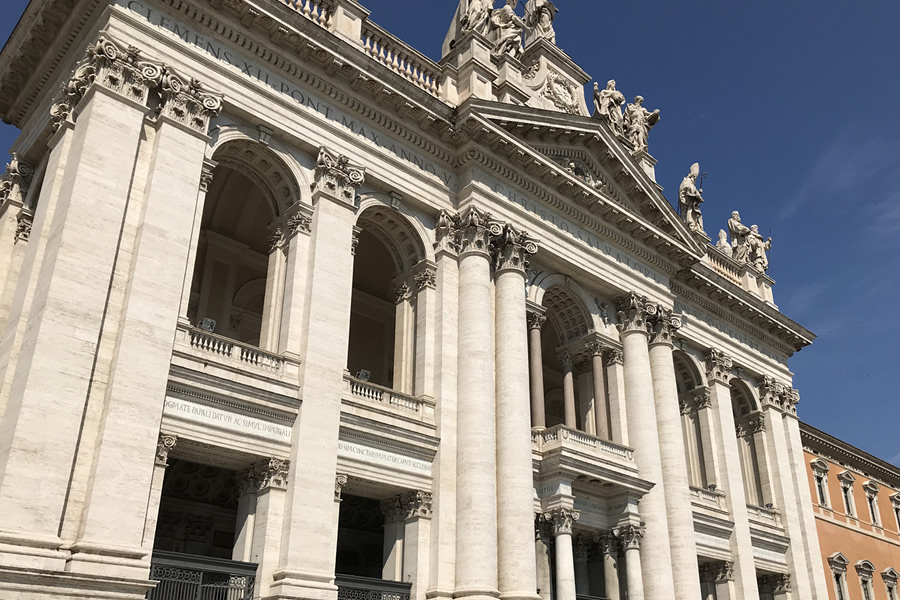
The Basilica of St. John Lateran
by Rev. Gabriel Baltes, O.S.B. | 11/13/2022 | A Message from Our PastorIt’s 5:10 on Wednesday morning, November 9, 2022, and as I’m looking out my kitchen window, I have a privileged view of this month’s full moon which traditionally has been called the “Beaver’s Moon.” It acquired this designation because during the light of this month’s full moon, beavers build their damns, their winter homes. On the church’s calendar today is the feast of the Dedication of the Basilica of St. John Lateran, the mother home for Christianity because it was the first public place of worship.
“Lateran” refers to the family that donated the land on which the Emperor Constantine erected this church in 324 AD. It was this emperor who legalized Christianity in the 4th century in thanksgiving for a battle victory that he attributed to our Lord Jesus Christ. Because Christianity became a recognized religion of the Roman Empire, its members were no longer forced to worship in hiding and could now own public buildings where they could safely gather for the sacred liturgy. The church of St. John Lateran was the first of these and was dedicated to both, St. John the Baptist and St. John the Evangelist. Contrary to what many Catholics assume, it is this church of St. John Lateran, and not St. Peter’s in the Vatican, that is the pope’s official cathedral. It is here that his “cathedra” or chair is enshrined to symbolize his universal leadership and teaching authority.
On just such a feast, with our friendly beavers to remind us, we do well to reflect on the significance of those physical places that we call our homes, and in particular those homes that house our worship. Clearly, the Christian faith existed without such public buildings, at least for its first three hundred years during which time the followers of Jesus worshiped in private homes or “house churches” as they came to be called. The ruins of some ancient house churches have been excavated and give us valuable glimpses into how primitive Christian communities prayed. Nonetheless, when given the opportunity to emerge from hiding and takes its rightful place in the public arena, Christianity could not resist the impetus to express its beliefs and convictions in architectural structures that were both tools of propaganda and tokens of its devotion to God. As these edifices multiplied throughout the Roman Empire, so the church grew in its membership and in its influence on the culture of Western Europe which entailed, its juridical systems, political structures and artistic achievements that continue to inspire people of every nation and religion to this day. It should come as no surprise that the Catholic Church has been called “The Mother of the Arts,” a title it rightfully deserves.
There seems to be, therefore, an organic quality within human beings that compels them to manifest their faith in visible structures where they can regularly gather to reinforce their faith and, just as importantly, hand it on to their children. Churches are, without question, catechetical tools that serve the faith by enabling it survive. It is for this reason that we are engaged in a parish wide campaign that will supply the necessary funds to help our church, our spiritual home, survive. Repairs are necessary for practical reasons. Every home owner knows this. But enhancements are necessary as well so that our faith can be expressed through beauty and art which speaks to the soul on a profound level.
And so I encourage all of you to pray for our church project and to contribute whatever your budgets will allow. What we do for our place of worship in the present will have lasting effects for the future of our faith community. We ask that what God has begun in us, will be brought to perfection through our efforts but, ultimately, through his Grace.
BACK TO LIST BACK